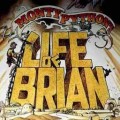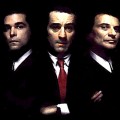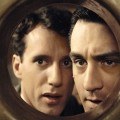Kids At The Pictures: How Cinemas Have Embraced The Family
Family films are now the cornerstone of Hollywood cinema. Strange then that, for a long time, both the studios and the movie theatres thought that children were better unseen and unheard...
Visit any multiplex and you’ll be struck by what a family-friendly place it is. From the no smoking policy and the extensive range of pick ’n’ mix to the wealth of afternoon screenings, the modern-day cinema reflects a contemporary movie trend. Family entertainment is now Hollywood’s main order of business. It’s a long way from when moving pictures first came into being, as the last people they were intended for were children.
Back at the birth of film, children were not encouraged to see moving pictures such as the Lumiere Brothers’ early blockbuster ‘Arrival Of Train At Station’. Convinced that moving pictures would corrupt kids, puritan authority figures spoke out against juveniles hanging around the local Roxy, or the Cinematographe, as it was more likely to be called. Father Charles E. Coughlin, the man later famous as the right-wing voice of religious radio, even went so far as to claim that cinema posed a “special threat to the young and the sensitive.”
In the absence of children, the cinema was as much a place for adults as the theatre, an establishment which then resembled a pub rather than a fine arts venue. Indeed, at the first movie houses, patrons were positively encouraged to smoke and, in some licensed theatres, drink.
This isn’t to say that early movies didn’t have child appeal. But while youngsters would have lapped up animated shorts like 1914’s ‘Gertie The Dinosaur’, such pictures were more likely to be enjoyed by adults, who’d praise them as ingenious experiments – J. Stuart Blackton, creator of the world’s first cartoon ‘Humorous Phases In Funny Faces’ (1906), found himself championed as “the father of a new art form” by The New York Times.
And even as the image of the movie theatre as a place of wickedness started to wane, the early child-unfriendly attitudes remained. Besides FBI chief J. Edgar Hoover deeming alleged Communist Charlie Chaplin unsuitable for kids (when, of course, it was teens who really needed to be careful around him), the Hays Office erected an exclusion zone of military proportions around relatively mild early horror movies such as ‘Dracula’ – an “H for Horror” certificate being created to make doubly sure that the little ones were spared the sight of Bela Lugosi mangling the English language.
It wasn’t until the advent of Shirley Temple, ‘The Wizard Of Oz’ and Walt Disney that family cinema as we know it became more common. Uncle Walt was the most influential, correctly realising that adults were quite prepared for their inner child to be entertained with intelligence and style. In providing the world with short cartoons (Steamboat Willy), feature-length animations (Snow White And The Seven Dwarfs) and live-action comedies (The Shaggy Dog), dramas (Treasure Island) and documentaries (The Living Desert), Disney became the first major purveyor of cinematic family entertainment.
More… Why The Lego Movie Is Possibly The Most Important Blockbuster Since Star Wars If You Talk In The Cinema You Deserve A Painful Death
Not that Walt was successful in turning movie-going itself into a family experience. For, while children were now welcome at cinemas, they were encouraged to attend matinée screenings where they could enjoy cartoons, safe comedies like Norman Wisdom’s ‘Trouble In Store’ and Arthur Lucan’s ‘Old Mother Reilly’ pictures, and science-fiction and Western serials such as ‘Flash Gordon’ and ‘Zorro’. Inaugurated by Granada founder Sidney Bernstein in the late 1920s, matinées were a staple part of British cinema-going for over four decades, their appeal being twofold - i) the price of admission was cheap, and ii) with the children having being entertained in the morning, the movie theatre could revert to a place for adults come nightfall.
Another, far greater obstacle concerning attendance was the state of the cinemas themselves. Slashed seats, peeling wallpaper, crumbling facades, sticky carpets – an evening at the cinema was about as pleasant as a night at a flop house. While the studios had been busy concentrating on their output, the film industry’s infrastructure had fallen into decay. It would take a major rethink to retake the cinemas from the adolescents and outsiders who had made them their hangouts.
While it might have been slow to court the family dollar, the industry did eventually get its house in order. The revolution occurred on many fronts, the most influential forces being the emergence of directors such as Steven Spielberg and George Lucas (whose Indiana Jones and Star Wars pictures were homages to the 1950s matinée serials they had grown up on) and the construction of the first multiplexes in the early 1980s. With new improved cinemas (and a seemingly limitless number of screens on which to play their product), plus a fresh form of TV-trumping entertainment on tap, Hollywood finally started to rake in the big money that lay in child-friendly pictures with added parent appeal.
Now worth billions of dollars per annum, family films are modern-day Western cinema’s cash cow. And we’re not just talking about the super-smart animated features from Pixar (Toy Story, Finding Nemo) and, to a lesser extent, DreamWorks (Shrek, Shark Tale). Family entertainment includes pictures such as ‘Batman Begins’, which didn’t let a little thing like being completely terrifying prevent the execs from sealing major merchandising deals with the likes of toy manufacturers Mattel.
Of course, if you were one of those parents who found themselves rushing their child into counselling after two hours in the company of Christopher Nolan’s exceptionally ‘Dark Knight’, you’ll appreciate that Hollywood now blurs the boundaries of family fun in rather disconcerting fashion. This, however, isn’t an entirely new phenomenon.
From issuing special PG certificates to Spielberg’s ‘Jaws’ and ‘Jurassic Park’, to creating the PG-13 certificate in America to accommodate ‘Indiana Jones And The Temple Of Doom’ and the 12 and 12a in Britain to cover Tim Burton’s ‘Batman’ and ‘The Bourne Identity’ respectively, the studios have long hedged their bets with regards to the adolescent and pre-teen audiences.
How reprehensible, you might say, but then, just as it attitudes towards sex and violence aren’t exactly norm, did you expect Hollywood’s understanding of family values to be dictated by anything other than business?
If you like it, Pass it on
 COMMENTS
COMMENTS
No comments yet, be the first!


 RELATED
RELATED








 SABOTAGE
SABOTAGE





